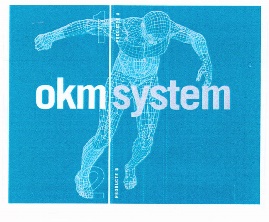Spinal Braces & Orthoses
Spinal
Spinal orthoses, which include neck and back braces, are used to support and stabilize areas of the body from the jaw to the lower back and cervical spine. These types of orthoses may be used postoperatively to promote proper and safe healing, to treat a chronic disease or condition such as arthritis or used to treat an injury, such as whiplash.
Neck Braces and Supports
A neck brace is cervical collar or cervical orthosis and may be used to treat an injury, provide support for degenerative disease that affects neck strength, or as a postoperative stabilization device. Cervical collars range from a soft style to a rigid style. Cervical orthoses are designed to fit the body anywhere from the jaw to the chest.
Cervical Collars:
Cervical collars are classified as soft or rigid. These types of neck braces range from a soft support that helps in the treatment of minor neck strains to a rigid brace that supports from under the jaw down to the chest area to provide maximum support and protection of the cervical and thoracic areas.
Halo Orthoses or Cervical Halo:
Halo orthoses are used to treat injuries to the cervical spine. This type of orthosis is comprised of a vest and superstructure and is typically used to treat a severe injury or unstable fractures to the neck or for postoperative stabilization.
Spinal Braces
Spinal orthoses, or back braces, range from an "off the shelf" soft support to a complex, custom made rigid orthotic. Like other orthotics, a spinal orthosis is named for the area of the neck/spine/back that is treated by the orthotic device.
Spinal Orthoses are prescribed to:
Realign the Spine
Incorrect alignment of the spinal column can compromise the spinal cord and existing nerve roots,
causing pain, weakness or even paralysis. A spinal orthosis can realign and support the spine, aiding in the healing process, slowing the progression of conditions such as osteoarthritis and scoliosis and helping preserve muscular and sensory functions.
Immobilize the Spine
When one segment of the spine moves, it creates motion in the areas immediately above and below.
Controlling this motion is extremely important in treating injured or damaged areas. The use of a spinal orthosis to immobilize the spine encourages fractures to heal, prevents progression of disease or deformity and provides overall support of the body.
Support Weakened Areas of the Spine
To ensure maximum stability of the spinal column during the healing process, orthotic devices are
designed to fit snuggly, providing maximum support to the entire torso, including the pelvis. The devices often incorporate rigid components that assume the function of damaged bones and ligaments.
Creating a Custom Spinal Orthosis
Optimal treatment outcomes are dependent upon an optimal fit; therefore, a spinal orthosis is often designed from a model of the patient’s body. In the past, models were created from a plaster and a series of measurements which was messy and uncomfortable to the patient. Today, we offer Insignia™ Laser Scanning System. Insignia is non-invasive, accurate three-dimensional model of the body. This quick, painless scan creates a permanent digital image that can supplement the patient’s medical record and can be used to provide a digital snapshot of the recovery process.
O R T E K Offers Spinal Orthotic Services:
O R T E K carries and fits a variety of cervical collars and spinal, neck and body braces to provide support, strengthening and healing of the area after surgery or injury. These orthotic braces can be fitted, molded and adjusted by the trained orthotists at O R T E K to provide a better fit and better results for the wearer as they heal.
Cervical Collars
Custom and off-the-shelf spinal orthotics
Cervicle-Thoracic-Lumbar-Sacral Orthosis (CTLSO)
Thoracic-Lumbar-Sacral Orthosis (TLSO)
Lumbar-Sacral Orthosis (LSO)
Custom Tailor Lumbar Corset with Shoulder
Custom Tailor Dorsal- Lumbar Corset ( Bivalve)
Custom Tailor Dorsal- Lumbar Corset with Velcro’s




